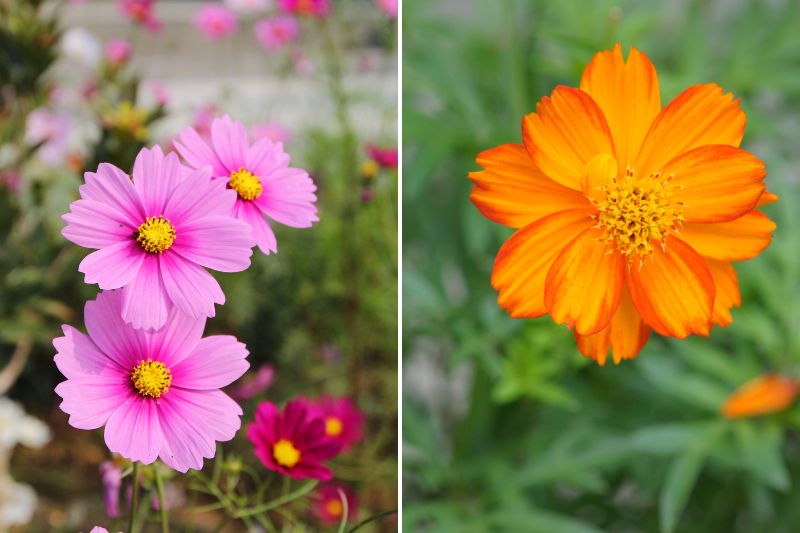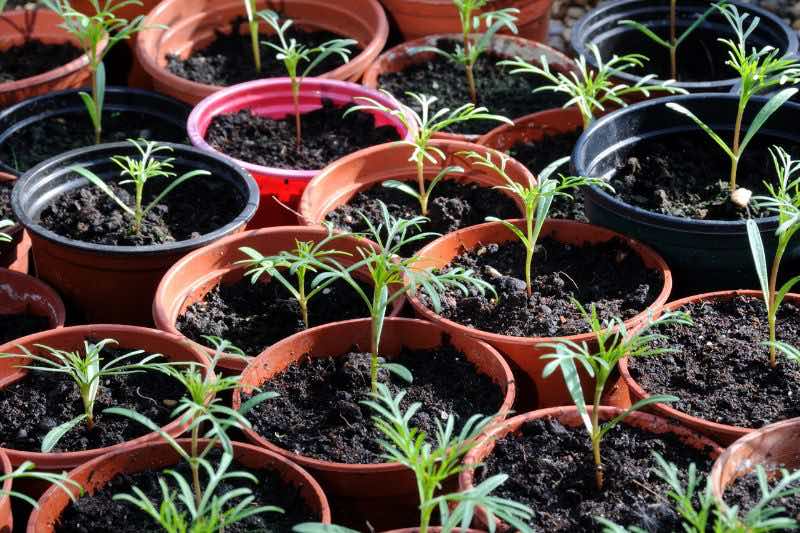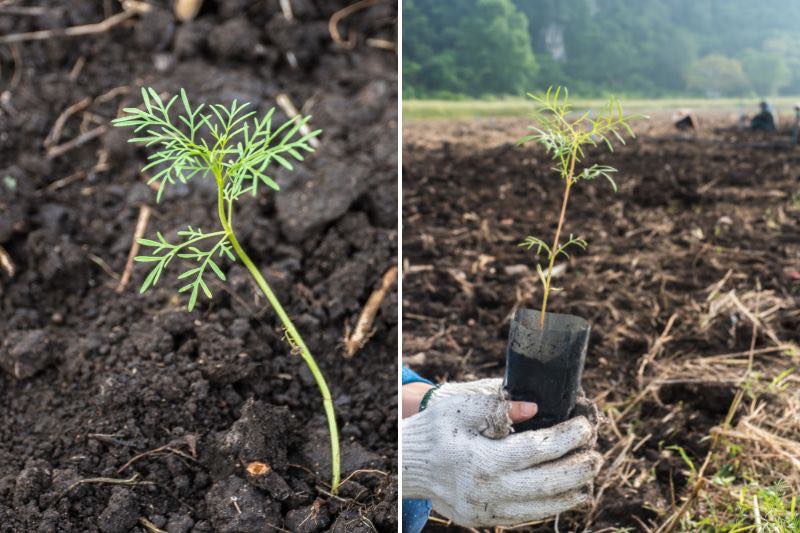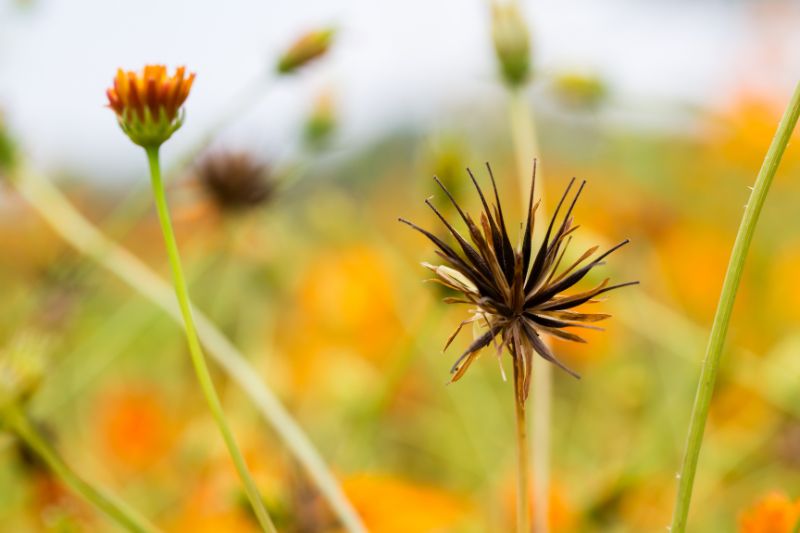Generous and colourful, cosmos enchant garden with their long flowering lasting several months. Frost‑tender, these plants of the daisy family are generally grown as annuals in our climate.
Cosmos belong to those fail‑safe, almost no‑care plants, which are particularly easy to grow and to sow. They are perfect for beginners. In borders, vegetable patch, beds, rockeries or in pots, they perform wonderfully everywhere with no difficulty.
Here are our tips and tutorials to succeed with sowing cosmos.
Which cosmos to choose for sowing?
All varieties can be sown, from Cosmos bipinnatus to Cosmos sulphureus, with single flowers or with double flowers.
In trade, you can find seeds of different varieties, as well as mixed packets combining several varieties, often in a pretty tonal range.

When to sow cosmos?
Under cover
Cosmos can be sown indoors from March or April, once temperature reaches at least 15°C.
Sowing under cover (greenhouse, conservatory, cold frame) allows flowering to be brought forward, so you can enjoy blooms from late spring.
In the ground
In open ground, sowing is done once last risk of frost has passed, usually between April and mid‑May depending on region.
Steps for sowing
Germination of cosmos seeds is fairly rapid. It usually occurs within 7 to 10 days, depending on ambient temperature. Allow about 3 months before first cosmos flowers appear.
Note: cosmos seeds are quite small and fine. Be careful when opening seed packets.
Sowing in buckets
- Fill buckets about 6 cm high with seed compost, or with equal mix of compost and sand.
- Moisten substrate well using a spray bottle.
- Sow 2 to 3 cosmos seeds per bucket.
- Cover with a fine layer of compost (about 3 mm).
- Press down lightly with back of hand.
- Place buckets in bright position, at temperature between about 15 and 25°C.
- Keep substrate moist until seedlings emerge, by misting regularly or watering with a fine spray.
- When young plants reach about 10 cm high, thin out leaving only most vigorous young plant in each bucket. Transplant others into new containers.
- Once last risk of frost has passed, cosmos can be transplanted to garden or potted up for outdoor placement. Allow spacing of about 30 cm between each young plant. To avoid temperature shock, harden off buckets gradually by placing outdoors for a few days before transplanting.
- Tallest varieties, from 1 m in height (‘Rubenza’, ‘Versailles Tetra’, ‘Psyché White’, ‘Apricotta’…) should be staked, so their fragile stems do not bend in bad weather. Alternatively, site them in shelter from prevailing winds, for example against low wall.
Note: it is also possible to sow in seed trays or in window boxes instead of using buckets.

Sowing in ground
For direct sowing of cosmos in place, choose a sunny, warm area. Cosmos develop in any ordinary soil provided it is well drained, that is, water does not stagnate. Sandy or stony soils, even poor ones, suit them well. Conversely, soil that is too rich will favour leaf production at expense of flowers.
- Prepare area to receive sowing by weeding, removing stones and loosening soil. If necessary, add sand or clay balls to lighten substrate.
- Using a hand claw or rake, level surface to obtain a smooth, even area.
- Sow broadcast, i.e. scatter seeds over soil as evenly as possible. You can use a hand seed sower if desired.
- Cover with a fine layer of compost (about 3 mm).
- Press down lightly.
- Water regularly with a fine spray until seedlings emerge.
- When cosmos plants reach about 10 cm, thin out leaving one plant every 30 cm approximately. Move other plants to new area of garden or into a container.
- Install stakes to support tallest varieties, if sited in windy position.

How to care for sown cosmos?
Cosmos are easy‑going plants that need almost no care to grow.
Water regularly in spring, then during dry spells in summer. Cosmos can tolerate occasionally dry soils, but prefer soil that remains slightly moist. You can apply an organic mulch around bases of cosmos, to retain moisture longer and reduce evaporation.
Remove spent flowers as they appear to encourage formation of new buds. You can also pinch shoot tips between fingers early in growth to encourage plant to ramify by producing new branches.
No addition of fertiliser is necessary.
From South American origins, cosmos have retained limited hardiness. At first severe frosts, plants will perish. Only chocolate cosmos (Cosmos atrosanguineus), which has tubercles, can be lifted and stored in a cool place like dahlias.
Harvesting cosmos seeds
Cosmos tend to self‑sow from one year to next, especially in light, sandy soil.
To ensure you can enjoy them the following year, you can harvest seeds after flowering. To do this, cut faded inflorescences and leave to dry in a dry, airy place for a few days. Then simply rub flowers between hands to release seeds. Store seeds away from moisture until next spring, in paper bag or envelopes.

Required equipment
Sowing under cover
- individual buckets (plastic or biodegradable) ;
- seed compost or horticultural compost mixed with sand ;
- spray bottle ;
- stakes (optional).
Sowing in place
- a weed knife ;
- hand claw or rake ;
- sand or clay balls to improve drainage in heavy soil (optional) ;
- watering can with rose ;
- stakes (optional).































![[planting_guide plant="cosmos" method="sowing"] Sowing Cosmos](https://en.promessedefleurs.eu/blogwp/wp-content/uploads/2023/03/Comment-semer-des-cosmos-.png)
Comments